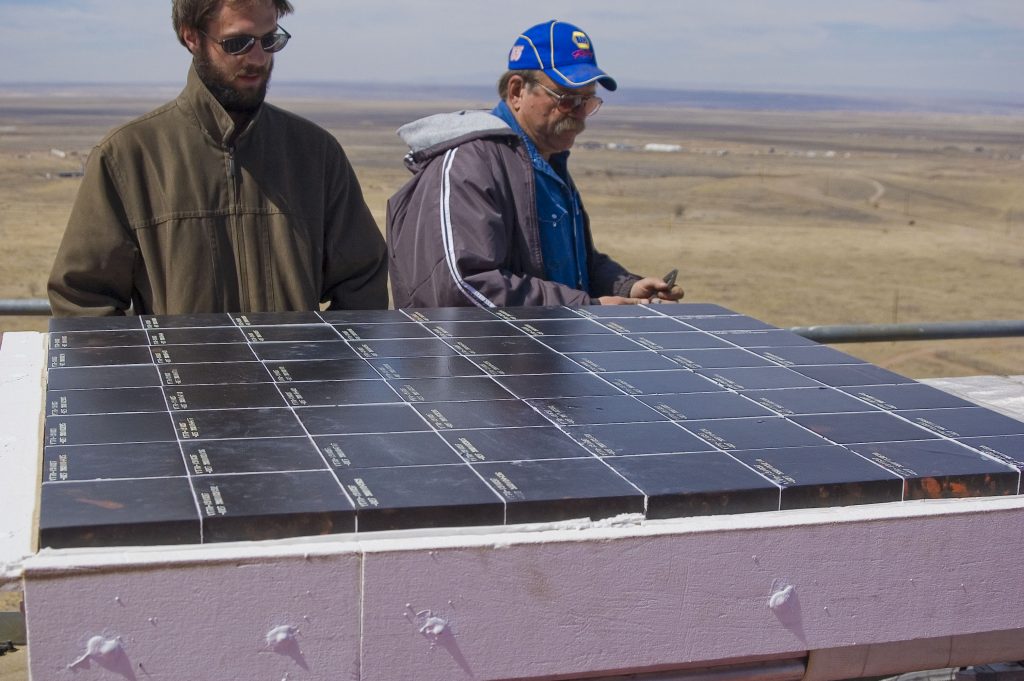ALBUQUERQUE, N.M. — NASA has once again turned to Sandia’s National Solar Thermal Test Facility — aka the Solar Tower — to help evaluate new technology for future space shuttle missions. NASA’s most recent testing series in early March evaluated the HYpersonic AeroTHermodynamic InfraRed Measurements (HYTHIRM) systems.
HYTHIRM is a collection of systems NASA wants to use to plan and execute missions. It includes a suite of radiometric infrared imaging systems, mission planning capabilities such as a radiance prediction methodology, and other systems with an understanding of atmospheric effects. NASA test director Kamran Daryabeigi says planners will use HYTHIRM to evaluate the performance of the participating sensor systems and associated image processing algorithms. Sandia test engineer Cheryl Ghanbari says NASA expects the new instruments to provide more accurate thermal and radiological monitoring data on the conditions on the shuttle’s surface during re-entry. NASA also hopes, Ghanbari says, that these monitoring systems will help scientists understand overheating of the shuttle surface due to unexpected boundary layer transition from laminar to turbulent flow caused by anomalies (like protruding gap filler).
The Solar Tower testing involved the coordination of infrared imaging assets from five locations — three land imagers, one flown on a Navy P2, and one space-based.
A four-foot by four-foot array of 64 shuttle LI-900 ceramic tiles was placed on the test arm at the top of the 200-foot high tower, Ghanbari says. Then thermocouples internally installed in some of the tiles on the array and an infrared imager located close to the test target provided actual surface temperature conditions.

A solar beam, made from reflections of 40 of the field heliostats, was focused on the test array of shuttle tiles. The array was subjected to uniform and nonuniform heating to obtain radiometric data of a known radiation source at temperatures up to 2,000°F. This high temperature, Ghanbari says, simulated surface temperatures of the shuttle during re-entry into Earth’s atmosphere, allowing NASA to calibrate and evaluate HYTHIRM.
Ghanbari says the facility provided an ideal test bed for an unobstructed view of the heated panel from the infrared imaging assets.
The test results will be used to evaluate the readiness of multiple monitoring systems and will help NASA determine their relative priority for deployment in support of future hypersonic boundary layer transition flight experiments on the shuttle orbiter in 2009.
Subsequent analysis of the imagery will be used to evaluate the performance of the participating sensor systems and associated image processing algorithms.


